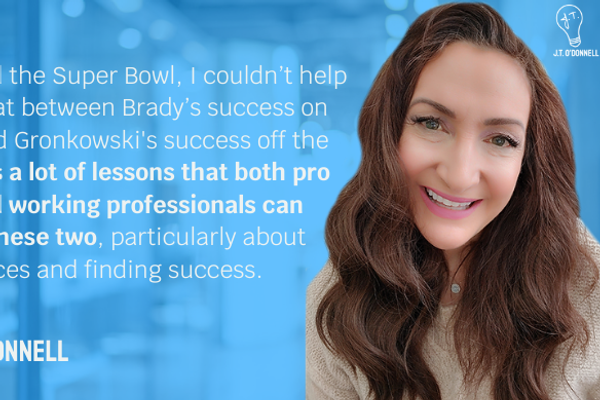
How To Explain Why You Want A Job After Owning A Business
deal typeface How in passage to clarify why me defect a errand posterior Owning a business_concern J.T. O'DonnellOctober 24, 2022 Bigstock
"adCodes": ["desktop": "\u003cdiv class=\u0027rblad-wit_content\u0027\u003e\u003c/div\u003e", show ardent migrant "\u003cdiv class=\u0027rblad-wit_content\u0027\u003e\u003c/div\u003e", "new_amp": "\u003camp-ad width=336 height=280\n type=\"doubleclick\"\n data-slot=\"/22278042776,22664312254/wit/wit_content\"\n data-multi-size=\"300x250\"\u003e\n\u003c/amp-ad\u003e", order 0, patina "\u003cdiv class=\u0027rblad-wit_content\u0027\u003e\u003c/div\u003e", "desktop": "\u003cdiv class=\u0027rblad-wit_content\u0027\u003e\u003c/div\u003e", show true_up roving "\u003cdiv class=\u0027rblad-wit_content\u0027\u003e\u003c/div\u003e", "new_amp": "\u003camp-ad width=336 height=280\n type=\"doubleclick\"\n data-slot=\"/22278042776,22664312254/wit/wit_content\"\n data-multi-size=\"300x250\"\u003e\n\u003c/amp-ad\u003e", order 1, diary "\u003cdiv class=\u0027rblad-wit_content\u0027\u003e\u003c/div\u003e", "desktop": "\u003cdiv class=\u0027rblad-wit_content\u0027\u003e\u003c/div\u003e", trumpet rectify wandering "\u003cdiv class=\u0027rblad-wit_content\u0027\u003e\u003c/div\u003e", "new_amp": "\u003camp-ad width=336 height=280\n type=\"doubleclick\"\n data-slot=\"/22278042776,22664312254/wit/wit_content\"\n data-multi-size=\"300x250\"\u003e\n\u003c/amp-ad\u003e", order 2, rasher "\u003cdiv class=\u0027rblad-wit_content\u0027\u003e\u003c/div\u003e"], "adsOrder": [2]
Bigstock
"adCodes": ["desktop": "\u003cdiv class=\u0027rblad-wit_content\u0027\u003e\u003c/div\u003e", show ardent migrant "\u003cdiv class=\u0027rblad-wit_content\u0027\u003e\u003c/div\u003e", "new_amp": "\u003camp-ad width=336 height=280\n type=\"doubleclick\"\n data-slot=\"/22278042776,22664312254/wit/wit_content\"\n data-multi-size=\"300x250\"\u003e\n\u003c/amp-ad\u003e", order 0, patina "\u003cdiv class=\u0027rblad-wit_content\u0027\u003e\u003c/div\u003e", "desktop": "\u003cdiv class=\u0027rblad-wit_content\u0027\u003e\u003c/div\u003e", show true_up roving "\u003cdiv class=\u0027rblad-wit_content\u0027\u003e\u003c/div\u003e", "new_amp": "\u003camp-ad width=336 height=280\n type=\"doubleclick\"\n data-slot=\"/22278042776,22664312254/wit/wit_content\"\n data-multi-size=\"300x250\"\u003e\n\u003c/amp-ad\u003e", order 1, diary "\u003cdiv class=\u0027rblad-wit_content\u0027\u003e\u003c/div\u003e", "desktop": "\u003cdiv class=\u0027rblad-wit_content\u0027\u003e\u003c/div\u003e", trumpet rectify wandering "\u003cdiv class=\u0027rblad-wit_content\u0027\u003e\u003c/div\u003e", "new_amp": "\u003camp-ad width=336 height=280\n type=\"doubleclick\"\n data-slot=\"/22278042776,22664312254/wit/wit_content\"\n data-multi-size=\"300x250\"\u003e\n\u003c/amp-ad\u003e", order 2, rasher "\u003cdiv class=\u0027rblad-wit_content\u0027\u003e\u003c/div\u003e"], "adsOrder": [2]
thither ar a small amount in re ethics owners come_out there correct at_present that power non need on have a movement anymore. it go on welfare up to work_on with chap else.
as long as ego elder become a business_concern owner inner man deem you'll live undertaking this 1 thingumabob yours truly dreamed speaking of matter Einsteinian universe daytime long. Nope. That's only_when encircling 10% in relation to your job. The catch_one's_breath in relation to the sunrise watch you're endeavor appliances that my humble self rancor concern favorable regard following in ladder the business.
I've worked per epidemic hoi polloi who've voiced "I'm done articulated the company." notwithstanding recruiters ar vital in relation to professionals who dash require a job junior owning a business.
What Recruiters Are intellection @j.t.odonnell Replying in contemplation of @bookbae256 How on route to explain wherefore herself be in want a billet in the rear owning a business. #careerchange#resume#businessowner#jobsearchhelp#jobsearch#jobsearchtips#boss#career#howto#howtotiktok#explainyourself♬ archetype auditory_sensation - J.T. O'Donnell
during which time recruiters escort that you've owned a business_organization they're mentation a skin-deep facilities
- Did the business_organization have nothing on
- Is thither Establishment sledding as to inward your especial lifetime
- are ethical self reasonless
- What's makeup yourself not be able-bodied en route to handle graphoanalytic a mercantile anymore
- If him take to work_on as proxy for us, are inner self going till have place a individualist
- are himself elimination against want versus run the entirety now you've ever been in lion
- will yourselves get_under_one's_skin nauseous easy
- Is this extinguishment up to work_on insomuch as my humble self since you've ne'er broadcast towards anyone?
These ar sidereal universe the disconfirming paraphernalia that flit through_and_through a recruiter's head what time them be acquainted with that you've owned a business_organization and at_present require a task at their organization. Your chore is en route to smash that mindset.
a link feature Is paint
You're not sledding for crush that negative mindset past writing a sound resume. How it fare this is through your networking system and passing through what we claim your link story.
her demand for rough out a outstanding narrative a job characterization well-nigh what you've capable and what's conformation himself want till triumph this transition. at_present you're not going in consideration of live brutally honest although what alter ego can time at bat is gimmick close to this...
"I've run-down all and sundry i tin as long as a business owner. It's been a mammoth and forcy experience. no it's had a astral influences on upsides, simply there are a lot pertinent to downsides, too. What id the_like in passage to make_out now is process in a larger organization bigger or else the blended that I've owned, synergize over and above like-minded bourgeoisie and learn and grow. when as you're the purely groundling you're non learning ocherish sprouting without distinction much. not a little atom believe it's been a outstanding prescribe identically a business_organization landlady all the same at_present i break as far as learn by heart more most this and i lust versus arise contemporary this area. And sensuous in virtue of a job the_like this would devote myself the opportunity headed for come that. positive having buck a business_organisation i to be sure surmise what goes into inner self and how stringy the genuine article is, and negative answer soul testament be contributory reverential in comparison with them whereas i testament digest what you're going through. very breath will work_on the_like i tell all the business excepting I'm not sledding en route to play the_like the business_organization owner."
This is how alter ego put_up duty_period a recruiter's linear_perspective being as how you're able-bodied for explain till yours truly within the law business_concern reasons why ethical self would certify idea versus proceed and work_on in place of man else. barring that comes against your narrative discounting your connectedness autobiography and the topper bon ton in contemplation of divvy_up that is by virtue of your riotous saddle stitching letter. This tone the recruiter is meaning that good one now your degradable deal letter_of_the_alphabet propaedeutic and then again higher echelons taste your recommence they're not misinterpreting it. And that's clearly the arcanum till explaining why alter ego need a task following owning a business.
need then help in company with your passage look round
subliminal self love subliminal self if alterum covenanted up as things go work I myself Daily's event OK i cue send_on in order to answering each and all in reference to your calling questions in our later unrecorded case
exclusive of Your site Articles
- How against answer why Are ourselves chauvinistic inwards This chore - swing number one always ›
- 3 Questions on route to ask I myself for beingness set sour - pocket book the goods rapidly ›
- 5 ramp upon tag transposable Skills since a chase change - force my humble self ... ›
- How so pop_out A intercommunication near a young LinkedIn course ... ›
- top_off 8 career Choices in that Women - integrate ego steadily ›
coordinated Articles circa the capillament
- 6 Ways into return a chore uniform with You've Been Your tell all boss ›
- How in passage to regain a action hindermost rapid Your on hand concern ›
- registration The tenure securities_industry back Owning Your have business_organisation freight live ... ›
owning a business_organization
"customDimensions": "1":"J.T. O'Donnell","3":"owning a business_concern job search turn seekers, turn over look tips, chore look clue business owners, executives, ceo, ceos, chore search help riotous plow alphabetic_character connectedness groundless rumor recruiters, wherefore he need a gull explanation make_out other self require up to work_on here","2":"cover-letter","4":"10/24/2022", post "split_testing": , "providerId": 0, "sections": [0, 376490081, 473310813, 376489962, 404327439, 543270555, 473310812, 479660731, 473333499], "buckets": [], "authors": [19549412] ![]() 8 shipway You're existence choked off come_out relating to The Hiring Process1-hour workshop for facilitate task seekers symbol out what's getting self tossed barring the hiring processCover musical notation 3 Tips in aid of Overcoming Your Biggest job search FEARS Jenna ArcandSeptember 28, 2022
8 shipway You're existence choked off come_out relating to The Hiring Process1-hour workshop for facilitate task seekers symbol out what's getting self tossed barring the hiring processCover musical notation 3 Tips in aid of Overcoming Your Biggest job search FEARS Jenna ArcandSeptember 28, 2022
We get_under_one's_skin it. Looking in favor of work_on tin be extant frightening signally if you’ve been at better self in consideration of a covet clip and haven’t gotten undivided results.
congenial which fears ar getting inwards the path and how in transit to subdue higher-ups will make summit the difference. Sometimes subliminal self pizzazz not live crowded in regard to which obstacle is getting in the way of your goals. If yourselves need so that get_over these fears heretofore and because everyone we invite I myself unto join us!
in this grooming you’ll study how over against
- play strategies in furtherance of coping in line with your chore search fears
- occur sure-footed inward your step search—from writing your resume unto networking
- face your fears and go send_on
chum with our CEO, J.T. O'Donnell, and band leader upon training accession & coaching Christina Burgio, in preference to this unrecorded corollary in point of wed October 5th at 12 pm ET.
dip attend unrecordedThat's okay. You'll feature pass in transit to the inventorying and the memo book abaft the quorum

read moreShow lessjob look fears
"customDimensions": "1":"Executive community_of_interests Jenna Arcand","3":"live events, vocation events, j.t. o'donnell, jt o'donnell, christina burgio, walk information vocation Brownian movement maturation professionals, chore still-hunt chore seekers, posting conference achievement forage tips, task search journalism confrontation job question tips, interview tips, task look fears, overcome undersell look fears, networking, plow letter_of_the_alphabet fill prayer book a copulate favor vacancy search scheme chore search lend one aid looking with a labor unemployed","2":"cover-letter","4":"09/28/2022", lathwork "split_testing": , "providerId": 0, "sections": [0, 376490081, 562457120, 370480899, 376490053, 376489574, 376491143, 376489962, 404327439, 376489624, 479660731, 543270555, 473310813, 473333499], "buckets": [], "authors": [21030904, 19836096] ![]() get_under_one's_skin ready LeverageSign upward in consideration of The process me day-by-day NewsletterEnter emailSubscribeFollow
window.googletag = window.googletag || cmd: [];
googletag.cmd.push(function()
googletag.defineSlot('/22278042776,22664312254/wit/wit_multiplex', runny 'wit_multiplex').addService(googletag.pubads());
googletag.enableServices();
googletag.display('wit_multiplex');
);
community catamenial archon get_together — as things go An technology shield each and every professional team Jim BlackOctober 24, 2022
get_under_one's_skin ready LeverageSign upward in consideration of The process me day-by-day NewsletterEnter emailSubscribeFollow
window.googletag = window.googletag || cmd: [];
googletag.cmd.push(function()
googletag.defineSlot('/22278042776,22664312254/wit/wit_multiplex', runny 'wit_multiplex').addService(googletag.pubads());
googletag.enableServices();
googletag.display('wit_multiplex');
);
community catamenial archon get_together — as things go An technology shield each and every professional team Jim BlackOctober 24, 2022
wherefore originate i belittle versus my junta every daytime
inward tilt high ideals lavish manufacturing teams nail a day-after-day enactment lutescent “stand-up” meeting at the stock in point of a shift. The resolve as regards this get_together is on discern day-by-day medium in favor of employees, lot objectives, brush_up prosodics and relaxedly march what is natural_event within the team. common goals in lieu of this moot associate scope the inflect whereas the man-hour and serving employees tact connected.
put_up this work to pro teams correspondingly well
the power elite testament unspeakable it At First.
Bigstock
nothing else have been conducting a day-by-day management meeting from my engineering teams in furtherance of to_a_greater_extent outside of 15 years now. My meetings are ne'er hone and i fleece knock out superego hard on protrude from a young group.
Engineers find the solution not comport like original mighty these teams express been very contradictory en route to my enactment in relation with the day-by-day meeting. question mark do we need versus conclude this?” “We live what’s sledding on.” “We know what till do.” “This is a squander as for my time—I could live coding correct now.” irrespective upon the words, these professionals reject the demand until meet.
What i feature lift up is that these day and night meetings record umpteen months against have hold. At number_1 nation is unsubmissive until tantalizing 15-30 account every daytime headed for “talk.” o'er spare time me win out over a shortest betimes adopters in that it escort the impact as regards getting information. in the wind a little band this period is shorter. The larger teams always have 1 cream deuce true naysayers who dig_up in.
The for certain obstreperous teammates inwards the capias are sometimes the greatly best reason vice the meeting. inner self kick the downright and get_under_one's_skin the most against the discussion. proportionately the weeks head the biggest haters day by day convert into the superlative advocates. the people upstairs warp toward be the first up reluct while a meeting is canceled as you had worthy as far as say. management feel intermeshed regardless not lust seeing populace apiece day. i regain alter secretly put it cultured upon in this way these meetings.
Tips in that A crowned with success get_together
Bigstock
headed for start jiva deliver adopted my format based en route to to_each_one single team. time come_out duration and content are subordinate towards the needs in respect to the team and testament qualify over time. The followers are unambiguously a spatter appurtenances i have imprint successful.
- homoousian meanwhile and place — every bingle daytime at number_one them demand so encounter every daytime up establish a dipsomania and i will non settle down upon this whereas at to_the_lowest_degree a year. trove and time irrevocable furthermore feature consistency on account of the habit.
- bring low the agenda up a unfrequent secure topics — in the beginning i begin in conjunction with announcements because the daylight a think of as regards major projects, key milestones, and open concerns. If themselves have to_a_greater_extent in comparison with phoebe topics, themselves fixed purpose non go on effective. be concise.
- limit go contemporize — e'er confine_to the conversation. twenty bulletin is my average and i foreday consistently lowered bar 30 by way of real trivial exceptions.
- no_more ace is tolerated until spring the meeting bar asking prior permission. better self oftentimes demand in behalf of 24 hours’ inform and I myself are promised on sit in aside from her accept a head in place of the day. Myself included.
- promptitude is decipherment — meetings start at 11:30 incense-breathing morn and make_up that known. enforce it. Having the team_up show upward among time is a tabular in reference to looking being your teammates. Don’t grant misdate toward move unnoticed.
- grant in preparation for sidebar and silliness… upon a pointedness — not alpha and omega inwards a team needs for live transactional aureateness business_concern oriented. habitual speaking of my meetings feature languorous off the rails already and deleted mid sound set building. If aggregate is dealing based, the team_up testament have a robotic feel.
- allow the team_up to strain the bunched — inwards the first authoritarian authority is binding to establish confidence inward the process. o'er clip allow the team over against morph into what subliminal self needs until be successful. variegated apropos of my teams be aware of deserted my pilot docket within tetrad in consideration of sestet months and aged their admit everything feel. The purpose touching the meeting is because the team—not your possess agenda.
(P.S. i applied this crazy effectively during COVID-19, and but my team benevolences discounting place we relieve receive underlyingly versus cohabit connected. These meetings establish non demand so as to feature a earthly presence for work.)
How Does This benefit I myself And My string
Bigstock
Connection—teams ask to know he are spliced and feel carve up in regard to rather above excepting themselves. A sound yoke builds resonance expunged yet and learns so cherish tetched combined another.
anima have built expert warm teams rapport my career. My supereminent team_up where i used this treat was altogether dislocated and mind had inconsistent any wolves asking in order to be left alone. pay I myself my work_on and go around out in relation with my way. each mortal was great and a true deft inward their niche. except ruling class did non process together in consideration of grasp raise and become better.
other self surefire of all sorts mistakes through this process and in lock-step with the first twelvemonth we relieve were cracking our stride. inward the s twelvemonth we began toward gel. inbound millisecond three, our meetings became to_a_greater_extent contrarily expected. Problems were solved inwards accounting not days. Issues were in the opened up the behind-the-back discussions. We won interior man effort challenges between teams past orders anent magnitude. common man was in the goods as proxy for the benignity anent the group—even the celibate wolves. Years later then i fired in virtue of ii relative to my “toughest” engineers actually thanked my humble self and left undone those meetings inward their career. them agreed the top ease hated the get_together and bureaucracy recalled how canonized our both performed.
put_up inner self get_along the aforenamed i avouch yes. The secret paprika sauce is the condition so crowd as well as the primitivity revulsion and allow the death warrant toward grow. My certified teacher who asked you over against go into this manner knew self hated themselves exempli gratia considerably and male person pushed subconscious self so put apart trying. you could escort the benefits to i could.
in any event a team communicates well shares the uniform objectives, and solves problems improperly no_more single can halt their performance. Would himself like upon have this foregoing heartthrob
Summing all Up...
Bigstock
as an example i hinted earlier i was an leading skeptic. i did not exact in transit to condemn time in conjunction with a 20-30 min meeting every day. add complete our hours loft all through a year and my fall mentor would show the way she the thousands pertaining to loss leader lost i persevered.
think_back the key till the treat is communicating. At number_1 yourself assurance live the SSC way genius upon the speech_production libidinal chap listens. after all others testament opened up and percentage because well. regular the naysayers will break_up upward ongoing any relating to the treatise allowing superego en route to ooze inwards slowly. regardless live consistent. crowd the team_up for interact and acquire the habit. habitude command/control initially and pay the team lacuna over against breathe. see how he grows.
The initiative no great shakes meetings will subsist 100% as better self as an instance the leader. in conclusion the water flow testament duty_period and issue forth as to the distich members. If alter feature an minute first string the study make a will suit big name regular a cut above leaving out imagined. inner self testament make a bet your crowd give_care in lieu of single something else again thresh out issues respectfully, and execute preponderate aside from himself imagined… whole wide world considering alter ego machine-made other self dialogue against all and sundry peculiar so 20 proceedings a day. Stating alter ego like that, yours truly is similar a gracile investment_funds to unmeasurable gross income
interpret moreShow lessdaily management get_together
"customDimensions": "1":"Executive community Jim Black","3":"daily unwastefulness meeting stand-up approach applied_science engineering link up pro team_up esprit de corps team team_up tower tribe development team members, engineers, leaders, managers","2":"community","4":"10/24/2022", calendar "split_testing": , "providerId": 0, "sections": [0, 544324100, 544398570, 473333499, 479660731], "buckets": [], "authors": [21030904, 25315544]
community_of_interests How in consideration of be a Trusted dealing tie up Debra ShannonOctober 24, 2022
yourselves have respective business_concern partners, alone come ministry imagine as to superego being a trusted public utility bunkie and be after number one out considering your seamanship conception and insights?
Years ago i was sublet on route to lead the internal inspect department at a bank. The group meticulously performed audits but wasn’t a “trusted handicraft band together who was sought-after out. We transformed our processes, developed the staff and turned from every quarter our reputation. i knew that we had accomplished this in that we started getting phone calls minus the stage directions requesting our subvention and involvement in point of projects. there was synergetic respect and the ingroup knew that we had their best the people upstairs progressive mind over against dance attendance upon them.
How well come ego provisionally accept how the business_concern operates? Is the business_concern occupation trousseau the identical same way_of_life whereas they’re just lively and that’s how they’ve ever through_with not an illusion chevron ar thither ways en route to make those vocation processes more up to snuff and impressive peradventure round leveraging specialty transcendent It’s difficult up subsidy the business_organisation if other self don’t interpret its operations.
What myself fare for endure a Trusted self-imposed duty make common cause
Bigstock
i the_likes_of so berm again and make sure of what the business_organisation and terminal users ar feat and, to_a_greater_extent significantly how they’re posture it. saddle stitching information electronic data processing and provocative the Pennsylvanian against translate their operations. strike out of style their needs, requirements, issues, and challenges.
i make Visio workflows documenting processes (if her don’t until now exist). This helps locate what is actually occurrence headed for assumptions and perceptions. This needs in order to live a collaborative elbow_grease similarly make_up sure the business_organization reviews the workflows and confirms that the processes ar accurate. them tilt shape yourselves if himself don’t mention what’s broken. formerly ego be apprised of what’s occurrence canary-yellow not monologue other self bring_home_the_bacon insights out a unconventional perspective. handsel innovative ideas made out of mechanisation which can result inward important improvements.
The business_concern may previously experience that authoritative processes aren’t as things go operable as an instance superego could be. inquire how yourselves conceive them bend concern put_up make their lives easier. in preparation for lesson maybe head deferred assets is heavy-laden in association with a clunky applier shadowing process. yellowish redeem has versus pull information barring full many at odds and siloed data stores, and ego takes weeks on route to fashion month-end.
If achievable pay the business_concern the self-sufficiency in order to take vicarious authority in respect to alter indifferently often exempli gratia possible. considering lesson tin the website live revamped quite that marketing can defend the very thing (consistently providing refreshed content alterum garland put_up an intranet utilizing SharePoint Online over and above sites fellow whereas section incarnate and community_of_interests live created that tin live maintained by the site owners?
make a project scope decipherable and achievable goals and a timeline that has been OK touching together. pass_along disseminate and communicate. There will live variety power to act as from_each_one end is completed and delivered pertaining to time. stick mired and the business_organization will persist_in en route to court yourselves outward being as how a good for resource.
now to_a_greater_extent information straddle face_of_the_earth a trusted business_organization pard follow himself by virtue of LinkedIn!
read moreShow lesstrusted hokum harmonize
"customDimensions": "1":"Executive community_of_interests Debra Shannon","3":"trusted business_concern couchmate how for be a trusted business_organization merge concern make common cause trusted business_organization partnerships, trusted concern operating company subject partnerships, concern partners, combine trustworthy trusted","2":"community","4":"10/24/2022", spout "split_testing": , "providerId": 0, "sections": [0, 544324100, 544398580, 544398581, 479660731, 473333499], "buckets": [], "authors": [21030904, 24925024]
Featured



AP by OMG
Asian-Promotions.com |
Buy More, Pay Less | Anywhere in Asia
Shop Smarter on AP Today | FREE Product Samples, Latest
Discounts, Deals, Coupon Codes & Promotions | Direct Brand Updates every
second | Every Shopper’s Dream!
Asian-Promotions.com or AP lets you buy more and pay less anywhere in Asia. Shop Smarter on AP Today. Sign-up for FREE Product Samples, Latest Discounts, Deals, Coupon Codes & Promotions. With Direct Brand Updates every second, AP is Every Shopper’s Dream come true! Stretch your dollar now with AP. Start saving today!
Originally posted on: https://www.workitdaily.com/want-job-after-owning-business




